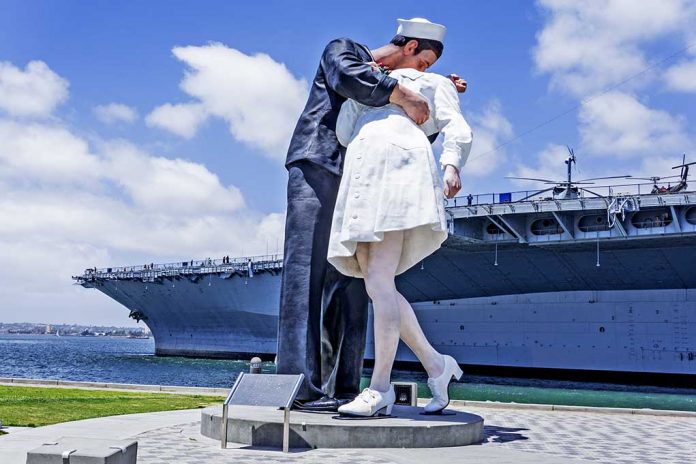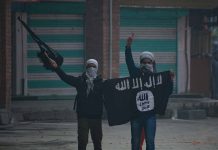
(NewsSpace.com) – The most commonly used date for the “start” of World War II is September 1, 1939, when Adolf Hitler’s Luftwaffe (Air Force) and Wehrmacht (Army) launched an attack on Poland. The United States did not enter full-fledged combat until the Imperial Japanese Navy bombed Pearl Harbor in a sneak attack on the morning of Sunday, December 7, 1941.
For Americans, the war was fought in two parts. One portion of the war was fought in the Pacific Theater of Operations (PTO), with General Douglas MacArthur leading the ground forces and Admiral Charles Nimitz as Commander-in-Chief of the Navy. Then there was the European Theater of Operations (ETO) under General Dwight David Eisenhower’s leadership.
ETO
After the Third Reich took over the vast majority of Europe, Hitler’s ally, the Empire of Japan, bombed the United States naval base at Pearl Harbor, Hawaii, which brought the country fully into World War II. From that point on, Hitler and his ally in Italy, Benito Mussolini, found themselves pressured from three directions at once.
From the West
Under the overall command of Eisenhower, the Allied forces stormed the beaches at Normandy, France, on June 6, 1944 — D-Day. After securing a foothold there, they moved inland and began their drive towards Berlin, Germany.
Between the dates of August 19-24, in conjunction with the French resistance, they undertook the liberation of Paris. On May 8, 1945, on what we now know as VE (Victory in Europe) Day, Germany declared an unconditional surrender, less than one year after the landing in Normandy.
From the South
Even before that famous battle on coastal France, the Allies made another invasion of the Axis powers when they attacked Italy near the town of Anzio. The first shot of that battle came on the morning of January 22, 1944. The Germans believed that weather conditions at that time of year would prohibit any kind of amphibious assault. They were wrong.
Although they were caught flat-footed, that doesn’t mean they didn’t battle hard, and their high command committed an additional 80,000 troops to repel the Americans and Brits. While they ultimately failed, they managed to keep them pinned down until late May, staving off Rome’s capture until June.
From the East
On June 22, 1941, Hitler launched Operation Barbarossa, sending more than 3 million soldiers and 3000 tanks into the Soviet Union to establish a 2000 mile front from the Black Sea northward. Within just a few weeks, the German forces had advanced and laid siege to Leningrad.
This campaign was a stunning victory, but one that would be a major disaster regarding Hitler’s hopes of taking Moscow, Russia. Lasting 880 days and claiming the lives of more than 1 million civilians and 300,000 soldiers, the Soviets managed to break the German front in January 1944 and were at the outskirts of Berlin for the surrender four months later.
PTO
The 1941 attack on Hawaii left the famed Battleship Row decimated. The USS Arizona, the USS Oklahoma and the USS Utah were lost, and several others were damaged but eventually returned to service. Although staggered, the fleet came back from the terrible blow and proved Admiral Isoroku Yamamoto correct when he wrote, “I fear all we have done is to awaken a sleeping giant…”
Chasing the Japanese west across the Pacific Ocean, the fleet gave battle in places with now-iconic names, including Guadalcanal, Iwo Jima and the island of Leyte in the Philippines, which allowed General MacArthur to keep his famous “I shall return” promise. These brutal sea battles and forced landings claimed thousands of lives on both sides of the conflict and led to one of history’s most consequential decisions.
In 1946, President Harry S Truman faced what is arguably the most difficult dilemma in America’s history when he faced an enemy that spanned several islands and whose citizens had vowed to protect their homeland with the life of every man, woman, and child, if necessary. Conventional warfare — if it would even work — would be time-consuming and claim millions of additional lives (as many as 10 million according to a 2016 article by the Australian Broadcasting Company).
After much deliberation, Truman decided to lessen the number of casualties, and on August 6, 1945, the United States detonated a nuclear bomb over Hiroshima, Japan. When the Emperor would not surrender, another one targeted Nagasaki on August 9. Finally, on August 30, 1945, General MacArthur faced Emperor Hirohito on the deck of the USS Iowa and accepted his surrender, putting an end to the Second World War.
Copyright 2021, NewsSpace.com










